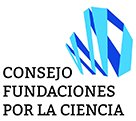The discovery of two new compounds likely to be developed as analgesics for inflammatory pain management is the study awarded with the ninth Research Prize of the Esteve Foundation. This work, published in February 2002 in the American journal Proceedings of the National Academy of Sciences, was performed jointly by investigators of the CSIC and of the Universities of Valencia and Miguel Hernández of Alicante.
The two new chemical compounds identified, DD161515 and DD191515, are selective inhibitors of receptor VR1. This neuronal receptor is located in the sensorial nervous terminations and contributes to the perception of pain caused by thermal and chemical stimuli. More specifically, VR1 is involved in the pathology of acute and chronic inflammatory pain as that produced by irritative chemical substances like capsaicin (an ingredient of bird pepper or chili) and by heat. After several biological assays in mice, the study showed that the two new compounds block VR1 receptor activity with great efficacy, thus showing a high analgesic and antiinflammatory activity. The identification of these new analgesic molecules was possible after screening a total of 10,640 chemical compounds.
Therefore, this could be a new family of analgesics to be added to the already existing ones for inflammatory pain treatment: opiates (like morphine) and non-steroidal antiinflammatories (like ibuprofen). The difference is that these two new compounds are more specific analgesics with fewer side effects. The importance of this finding and the future therapeutic applications for pain management were the reasons to award the ninth Research Prize of the Esteve Foundation to Antonio Ferrer Montiel, from the University Miguel Hernández and one of the authors of the articleAttenuation of thermal nociception and hyperalgesia by VR1 blockers.






